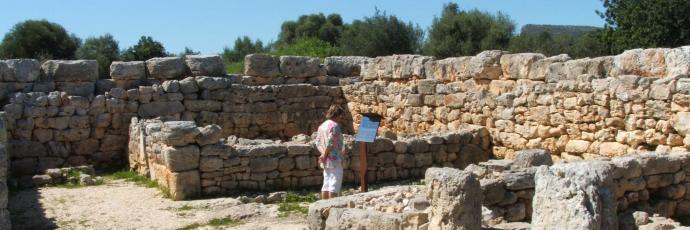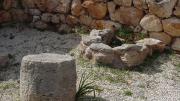Calas de Mallorca:
TALAIOT
S'HOSPITALET VELL
This site is located on the east coast of Mallorca, on the road to Cales de Mallorca. The entire area of Hospitalet Vell was settled quite early, as there are also remains of navetas from the pre-Talaiotic period. However, the long wall and the preserved square talaiot seem to date back to Punic times. It is assumed that their construction dates back to the fifth century BC - the time when the Carthaginians increasingly established trading settlements in the western Mediterranean and on the Spanish mainland, which later also became military bases. S'HOSPITALET VELL
Hospitalet Vell is clearly different from all the other talaiot buildings on the island and is particularly interesting and unique for several reasons. Firstly, there is the approx. 22 m long wall that encloses a rectangular area. It was built using a technique that is unusual in Mallorca. It is unusually perfectly crafted and does not correspond to the simple technique used by the builders of the other talaiots for centuries. Similarities are more likely to be found in ancient Greek walls from the 5th to 7th centuries BC. The space enclosed by it seems to have been empty at first. Later, two covered rooms with different chambers were set up in it, and a patio with two fireplaces.
This wall and the finds of numerous objects from the time of the Punic Wars suggest that this could have been a trading and military station built by Carthaginians. Perhaps the famous "Honderos" were trained here, an elite troop of Mallorcan stone throwers feared until Roman times. After all, there is every indication that this site was abandoned in the second half of the 2nd century BC, around the time after Carthage was destroyed by the Romans in 146 BC and the Romans militarily conquered Mallorca in 123 BC.
The square talaiot is also unique. It is the only talaiot in Mallorca whose central column still has the remains of its former covering. This was made possible because the roof here was not made of the usual wooden beams covered with leaves and earth, but of elongated stone slabs. While the walls of other talaiots have a clear slope, here they are almost vertical.
The Talaiot has been used in various ways over the centuries. The last known inhabitant is said to have lived here as late as the 18th century.










